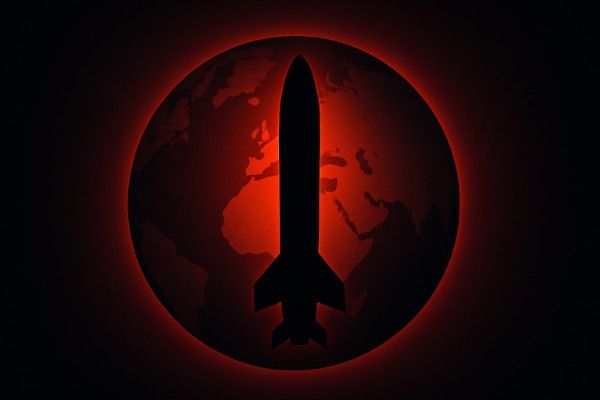Owing to their ability to conduct real-time surveillance, reconnaissance, and precision strikes with minimal risk to human personnel, Unmanned Aerial Vehicles (UAVs) – commonly termed as drones – have increasingly become significant in contemporary warfare. In October 2024, India signed a landmark deal with the United States for procuring U.S-produced drones. Worth approximately $3.5 billion, the deal paved the way for New Delhi to acquire a total of 31 MQ-9B drones from the U.S.-based General Atomics. The deal underscored the deepening strategic partnership between Washington and New Delhi.
As per the deal, the first MQ-9B high-altitude long-endurance (HALE) drone will be delivered by January 2029, while all of the drones will be delivered in batches by October 2030. Commonly termed as hunter-killers, the MQ-9B drones are a series of remotely-piloted advanced unmanned aerial vehicles (UAVs), based on the widely used MQ-9 Reaper drones technology. While the negotiations for the purchase began in 2018, however, in the ensuing years, New Delhi’s sense of urgency to procure the drones increasingly grew owing to its standoff with the People’s Liberation Army at the Line of Actual Control. Whilst New Delhi’s indigenous agencies continued to fall behind delivery schedules to develop the domestic TAPAS BH-201 drones.
While New Delhi looks forward acquiring the MQ-9B drones, China already operates a wide range of multirole drones – most prominently the Wing Loong and CH-4B drones, whereas Pakistan is operating the Turkish-origin TB2 Bayraktar and Akinci drones, as well as Chinese-origin Wing Loong and CH-4B drones.
Nevertheless, the introduction of the MQ-9B drones into India’s arsenal is expected to significantly enhance Indian military’s surveillance and reconnaissance capabilities. Equipped with advanced electro-optical/infrared sensors and precision-guided munitions, these drones will provide real-time intelligence and the capability to engage targets with high accuracy. The Sea Guardian variants shall be deployed in the Bay of Bengal and the Andaman Sea. The Sea Guardians – laden with the ability to conduct anti-submarine warfare –would be a major step towards the introduction of unmanned aerial vehicles in the Western-Indian Ocean region. On the other hand, the Sky guardian variants shall be employed for land-based operations – for ISR missions and precision-striking – along India’s borders with China and Pakistan. More specifically, along the Line of Actual Control, the drones are expected to enhance surveillance of Chinese military movements, including troop deployments, construction activities, and logistics operations. This is particularly crucial in the post-Ladakh standoff context, since both Indian and Chinese forces are reported of ramping up their border infrastructure and surveillance capabilities.
However, like any other UAV, the MQ-9Bs also come with their fair share of limitations. These drones are not stealth-capable. This makes them vulnerable in high-threat environments. Their propeller-driven design limits their flight performance, rendering them susceptible to interception by modern fighter jets and advanced surface-to-air missile systems. Their operational focus is geared more toward asymmetrical warfare and counter-insurgency operations rather than high-intensity conflicts against technologically advanced adversaries. In this lieu, it can be estimated that the drones could be easily intercepted by advanced air defence systems such as China’s HQ-9B air defence system or the HQ-16FE air defense system employed by Pakistan. Therefore, in any potential tactical faceoff with the Chinese or Pakistani forces – which already possesses cutting-edge military technologies and robust air-defence systems – the MQ-9B drones could be significantly constrained. Consequently, their role could be reduced to intelligence gathering; that too from a considerable and secure distance – which could severely limit the volume and quality of intelligence collected, further diminishing its operational value in a high-stakes scenario.
Moreover, despite being cost-effective vis-à-vis a manned aircraft, the MQ-9B drones are nonetheless expensive to operate and maintain, especially in contested areas where attrition risks are high. Each drone costs approximately $32 million, and losing one to adversary action represents a substantial financial and strategic setback. Since the onset of the Israel-Hamas war, five MQ-9A drones have been downed by the Yemen-based Houthis. This is in addition to the MQ-9B drones that were shot by Houthis in 2017 and 2019. While the Indian Navy itself had leased two MQ-9B Sea Guardians in September 2020, one of them crashed into the Bay of Bengal recently, in September 2024, reportedly due to a technical failure.
Lastly, going forward, New Delhi’s acquisition of U.S.-produced drones may also result into India’s growing dependence on American drone technology. This may particularly hold true for the maritime leg of Indian forces. The deal does not feature any transfer of technology. Hence, while the Indian defence forces will operate highly-sophisticated unmanned aerial systems, their preference for domestically-produced systems, based on local technologies may dwindle down. Secondly, the MQ-9B drones are complex systems, and their effective deployment shall not just hinge on initial procurement but also on sustained technical cooperation from General Atomics and American defence contractors. The Indian defence forces shall be relying on American expertise for the maintenance, upgrades, and technical support. The dependency could also translate into limited autonomy in strategic decision-making. Hence, in the longer run, the dependence could impact India’s strategic flexibility in, especially if and when its defence-related imperatives evolve in way that they contrast U.S. defence interests.
Table of Contents
Toggle











